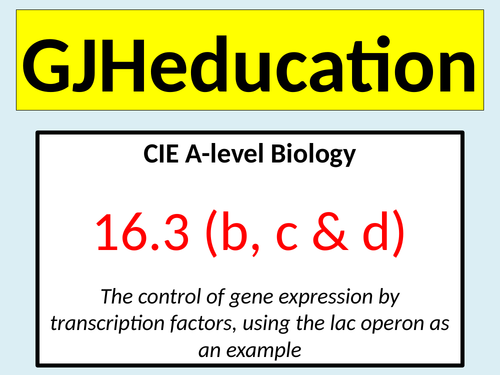






This lesson describes the function of transcription factors in eukaryotes and uses the lac operon to explain the control of protein production in a prokaryote. The detailed PowerPoint and accompanying resources have been designed to cover points 16.3 (b, c & d) as detailed in the CIE A-level Biology specification and also includes a description of how gibberellin breaks down DELLA protein repressors, allowing transcription to be promoted.
This is one of the more difficult concepts in this A-level course and therefore key points are reiterated throughout this lesson to increase the likelihood of student understanding and to support them when trying to make links to actual biological examples in living organisms. There is a clear connection to transcription and translation as covered in topic 6, so the lesson begins by reminding students that in addition to the structural gene in a transcription unit, there is the promoter region where RNA polymerase binds. Students are introduced to the idea of transcription factors and will understand how these molecules can activate or repress transcription by enabling or preventing the binding of the enzyme. At this point, students are challenged on their current understanding with a series of questions about DELLA proteins so they can see how these molecules prevent the binding of RNA polymerase. Their understanding is then tested again with another example with oestrogen and the ER receptor. The final and main section of the lesson focuses on the lac operon and immediately an opportunity is taken to challenge their knowledge of biological molecules with a task where they have to spot the errors in a passage describing the formation and breakdown of this disaccharide. Students will be able to visualise the different structures that are found in this operon and time is taken to go through the individual functions. A step by step guide is used to walk students through the sequence of events that occur when lactose is absent and when it is present before they are challenged to apply their understanding to an exam question.
Something went wrong, please try again later.
This resource hasn't been reviewed yet
To ensure quality for our reviews, only customers who have purchased this resource can review it
Report this resourceto let us know if it violates our terms and conditions.
Our customer service team will review your report and will be in touch.